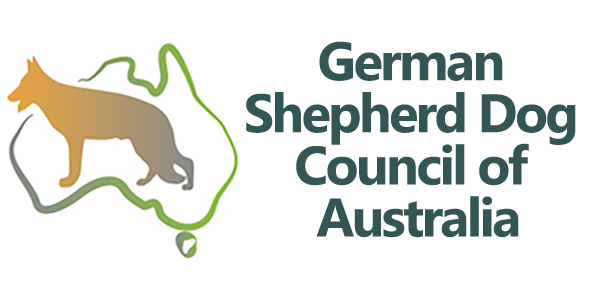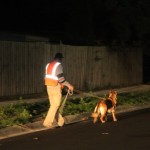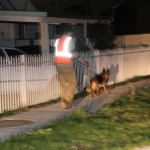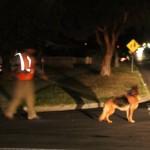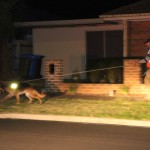Tracking and Track and Search Trials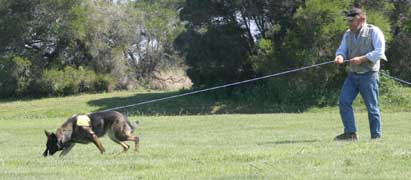
The dog’s ability to track is well known. Historically, man has used this natural ability in a wide variety of ways. Dogs help the hunter to find game and food. In France and other countries, dogs hunt for exotica such as truffles. Dogs are used by police to hunt criminals and by search and rescue workers to find lost people.
German Shepherd Dogs have always been in the forefront as tracking and search and rescue (SAR) dogs, because of their natural aptitude and willingness to work. This working ability is a key factor in why the German Shepherd Dog is highly valued and used all over the world for a large variety of services and SAR work.
For people outside these professional fields, competition tracking is a sport where dogs compete for ANKC (Australian National Kennel Council) titles. The purpose of tracking is for the dog to follow a human scent trail and find the “missing person” at the end of the track. Tracking is something that all dogs can do. It is a natural instinct for a dog to use this sense, and German Shepherd Dogs excel at this sport. Tracking trials are held regularly around the country, usually in the cooler part of the year, to avoid extreme heat and the possibility of snakes.
Further information on tracking can be obtained by reading the Dogs Australia (ANKC) Tracking rules.
To view the tracking rules please click here
Track & Search
A new form of competition was added to the ANKC Rules in 2008. It is called Track and Search.
Currently it is possible to achieve three titles; Track and Search Dog (TSD) and Track and Search Dog Excellent (TSDX) and Track and Search Dog Champion.
The tests are meant to be as close as possible to a real life situation where a dog is meant to find a missing person in varying terrain.
Various surfaces including gravel, sand, paved surfaces, timber decking and dirt and asphalt roads are used. Ordinary grass and pasture can be used, but 25% of the track for Tests 1 to 4 must be laid on surfaces other than plain grass. Test 5 and 6 are laid in suburban streets and the track is substantially on paved footpaths. Tracks are also meant to meander rather than continue in straight lines as in traditional Tracking. Also unlike traditional Tracking, tracks can be laid in contaminated areas where the public and other animals may be encountered.
Tracks also vary in complexity with differences in length, time delays and numbers of diversions and cross tracks.
For the earlier tests, the dogs also should find articles that someone might have lost in real life eg. Mobile phone, notebook, toy, wallet or anything that can be imagined that is small and harmless to all.
The later tracks are held in streets where cars and pedestrians and dogs and cats must be negotiated. The final track to gain the title of Track and Search Dog Excellent is held in the streets at night.
Tracking titles
- TD – Tracking Dog
- TDX – Tracking Dog Excellent
- T.Ch – Tracking Champion
- TSD – Tracking Search Dog
- TSDX – Tracking Search Dog Excellent
Track and Search Titles
- TSD – Track and Search Dog
- TSDX – Track and Search Dog Excellent
- TS CH – Track and Search Dog Champion
